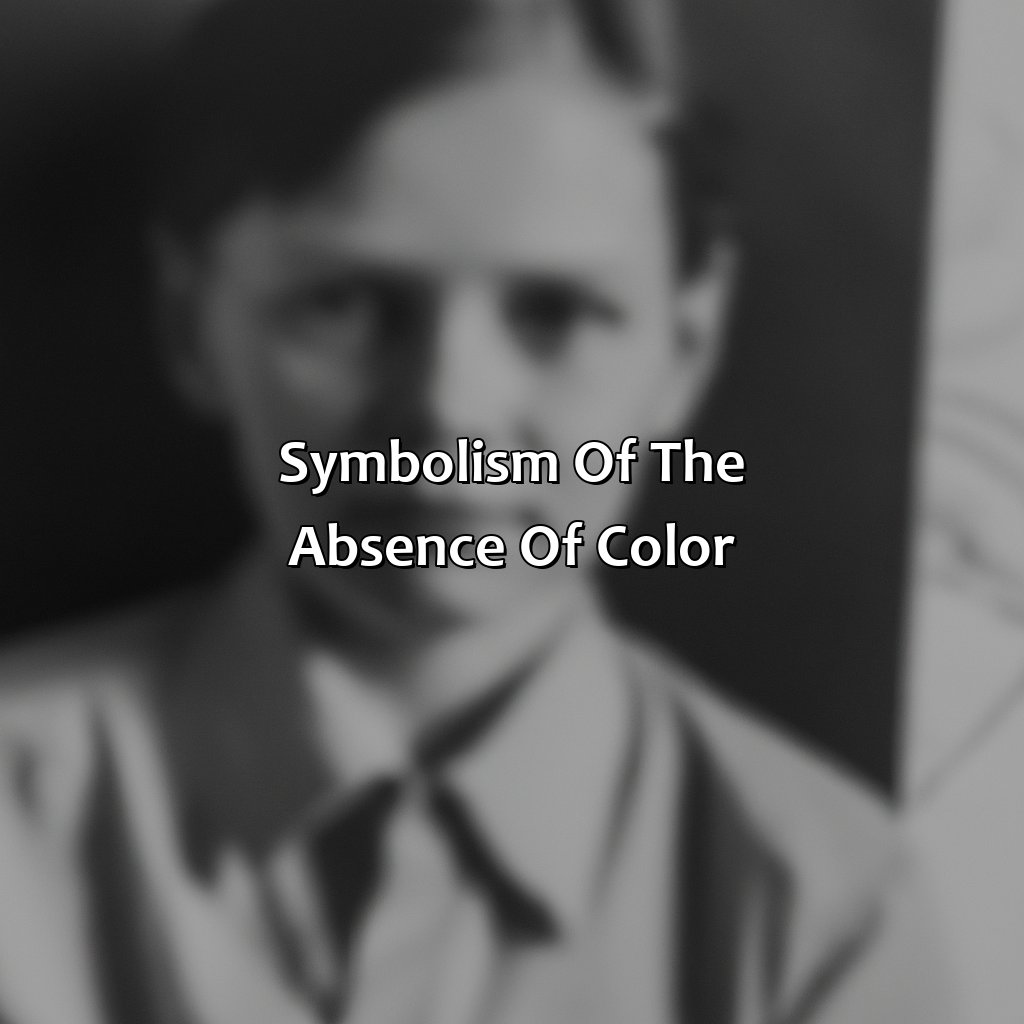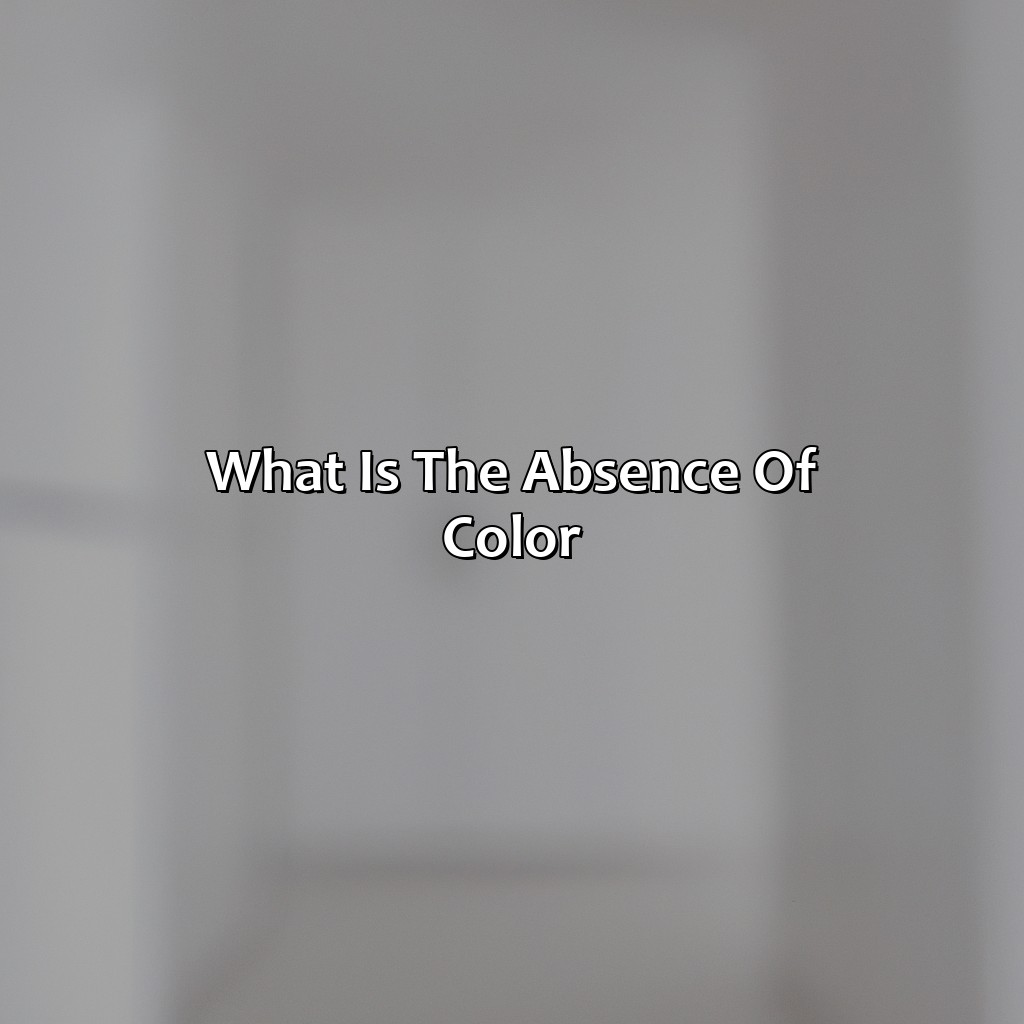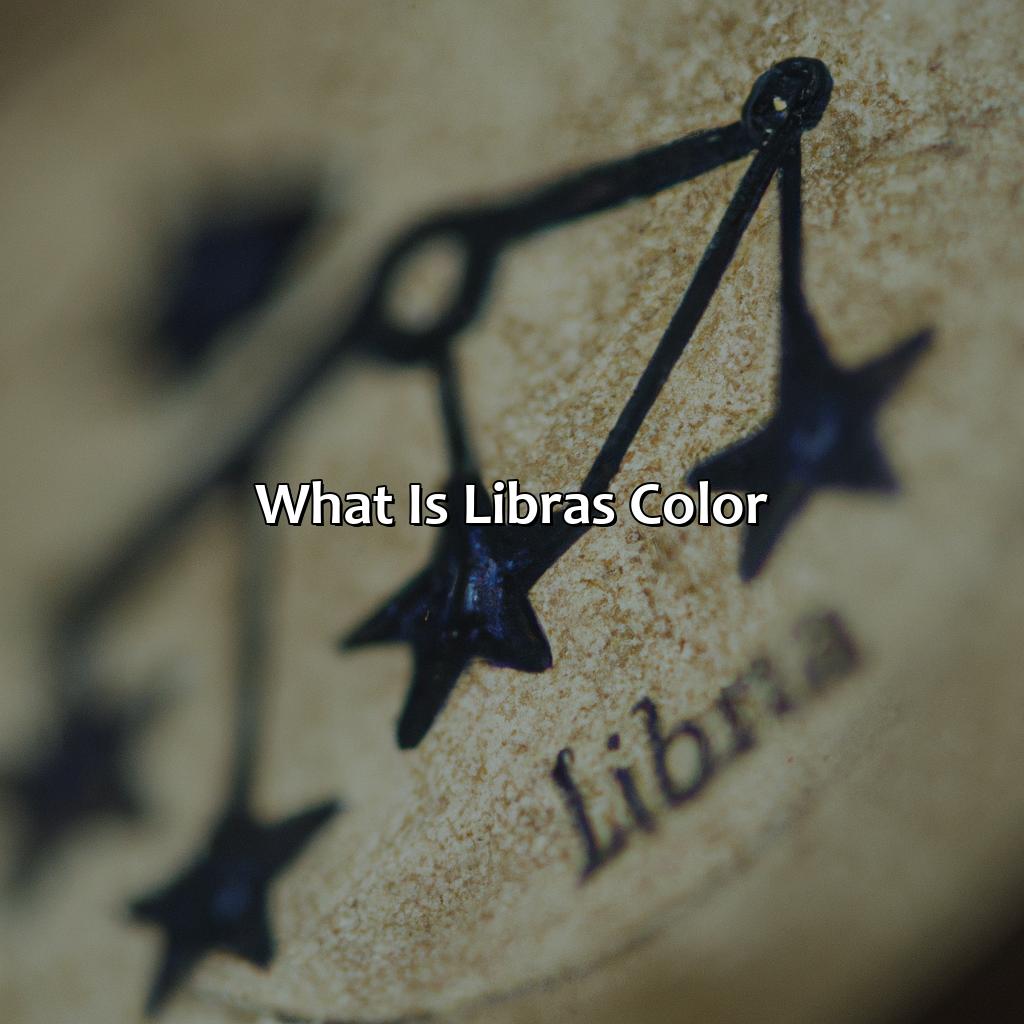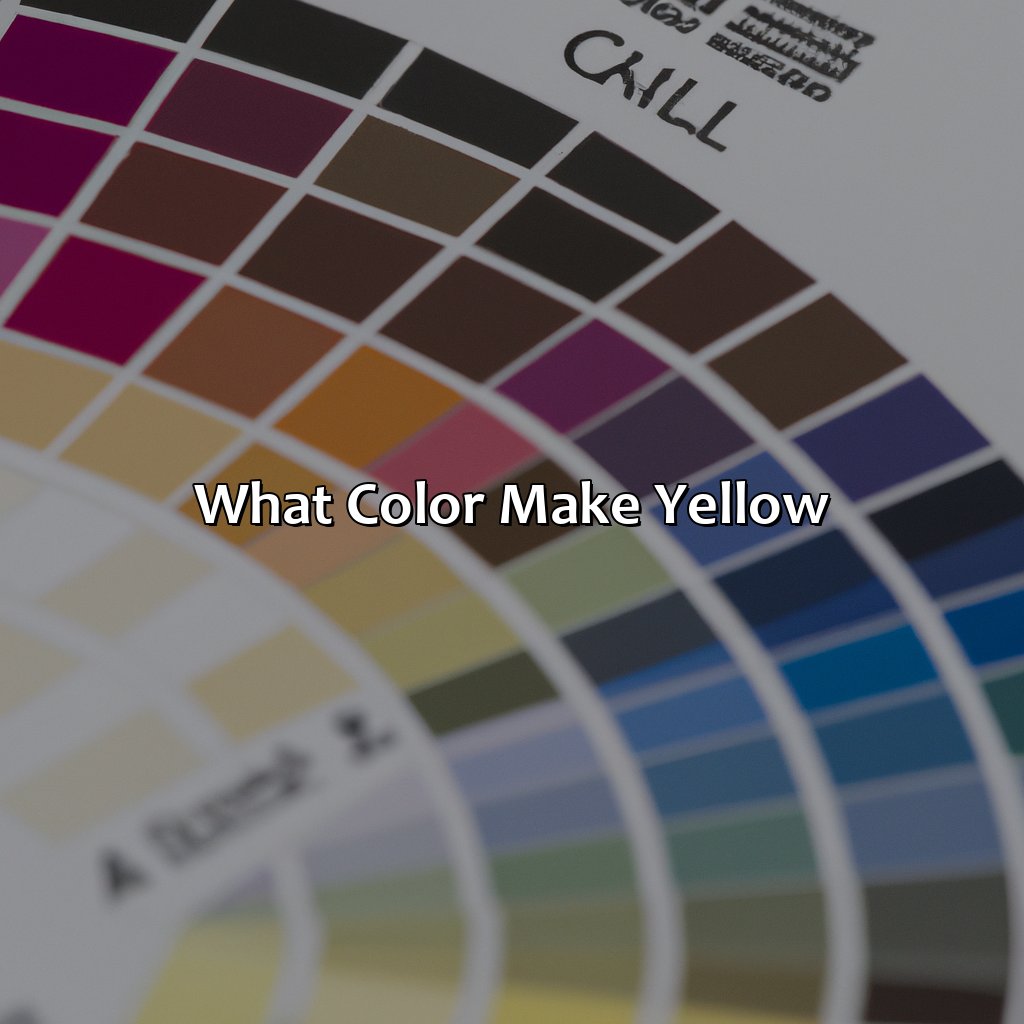Key Takeaway:
- The absence of color refers to the lack of hues or pigments in an object or image, resulting in a colorless or neutral tone. It can be described as achromatic, monochromatic, grayscale, black and white, or washed out.
- There are three main types of color absence – black and white, grayscale, and minimal color. Each type is characterized by different levels of color absence, from complete absence in black and white to minimal presence in minimal color.
- The absence of color has symbolic meanings, often associated with concepts like purity, simplicity, or mourning. Black is associated with mystery, elegance, and power, while white represents innocence, clarity, and emptiness. Gray is associated with neutrality, balance, and detachment.
Defining Color and Absence of Color

Photo Credits: colorscombo.com by Logan Scott
To understand color and its opposite, we explore what sets them apart. This is important to understand how color is seen. The sections follow to explain the meaning and features of colorless objects. We look at terms like ‘devoid’, ‘dull’, ‘neutral’, ‘monochromatic’, ‘grayscale’ and ‘black and white’. We also examine how these words affect how we see them.
What is Color?
Colors are defined as visual perceptions that humans experience through the phenomenon of light. These perceptions are produced by light waves with varying frequencies that strike our eyes and activate different photoreceptor cells in the retina. As a result, we can distinguish between different colors such as red, blue, green, and so on. Colors form an essential part of our lives and have significant cultural, emotional and psychological impacts.
When it comes to exploring the nature of color, it’s important to note that these perceptions are subjective and vary from one individual to another. While some people might perceive a particular hue as warm or vibrant, others may describe it as dull or cold. Moreover, cultural backgrounds also play a critical role in interpreting colors differently.
Colors can be described using several attributes such as hue (the characteristic color), saturation (the intensity or purity of the color) and brightness (the amount of light reflected by the color). Understanding these attributes helps graphic designers, artists, advertisers and other professionals use colors more effectively in their work.
For those who study how humans perceive colors – understanding the absence of color is equally important. This absence is known as ‘achromatic’ or ‘neutral‘ color – being free from any particular hue. People usually associate white, black and gray with neutral colors or lack of colour. However perceptually neutral tones do exist outside this range such as pale beige or taupe colors.
Exploring how we perceive them teaches us more about what constitutes “color” perception itself – at what point does something go from having colour to not having colour? This question sits at the heart of what researchers call ‘colour vision science’.
One true story worth sharing is about a high-security prison in Brazil nicknamed “Black Curtain”. Inmates were kept under such severe conditions that they only experienced darkness for several months each year – there is still debate over whether this caused a form of monochromatic vision where prisoners lost their ability to differentiate colours.
Exploring the absence of color is like diving into a colorless ocean – monochromatic, achromatic, and devoid of vibrant hues, but still full of depth and intrigue.
What is the Absence of Color?
In visual arts, the absence of color is referred to as colorless, devoid of color, or neutral tones. This absence of color is commonly known as achromatic or monochromatic. Achromatic colors are limited to black, white, and shades of gray. On the other hand, monochromatic colors are all made up of a single hue altered by adding either white or black. Grayscale is another style that falls under the category of the absence of color; it’s when an image is brought down to different shades of black and white with all the intermediate values and hues removed.
Absence of color is usually associated with sterile environments as well as plain and unimaginative objects; this term refers to colors perceived as bland, plain, dull lacklustre, and nonvibrant. However, in some art forms like photography and design, washed-out polarizing backgrounds can add charm to enhance the subject’s beauty without being distracting through uncolored and unpigmented themes.
The human eye perceives visual colors based on light waves reflected from objects that hit our retinas’ cones; alterations in these waves are interpreted into various shades – hue- chroma & saturation by our biological sensory machinery housed in our skulls. The cones inside our eyes help us view the detail similar to playing with Photoshop filters where we can adjust contrasts and saturation.
Describing this entity without proper scientific concepts would be naïve as functions like rods (low light) & cones(highlight) cells heterodyne differ ent aspects in terms interpretation mechanism within our brain neural networks – despite which objective measures such spectrophotometer has been clinically proven quantifying effective pigmentation present on any surface area which revealed its importance in products such as sunscreen lotion that predominantly used in sunburnt areas.
In art and design trends desaturated themes have increased showcasing aesthetics for achieving minimalistic designs by omitting overpowering hues causing visual clutter. In fashion, by keeping plain sober dresses or suits and choosing slight patterns on them can assure professionalism needed for the workplace – the absence of color portrays a sense of competence.
From black and white to minimal color, there are various ways to strip an image of its vibrant hues and make it look depressive and bleak.
Types of Color Absence

Photo Credits: colorscombo.com by Jack Allen
To investigate color absence more closely, you can examine the different ways to do this in design. These include Black and White, Grayscale, as well as Minimal Color. These sections provide ideas on how to remove color or use limited colors to make a special design with a monochrome or neutral palette.
Black and White
The monochromatic world of Black and White is a stark contrast to the vibrancy of colors. It represents the absence of color in an unparalleled manner. The monochrome mode brings forth a unique feeling with its contrasting tones, similar to Ying-Yang’s principles.
Apart from their symbolic significance, Black and White have distinct personalities that make them stand out individually. Black represents darkness, power, mystery and sophistication, whereas White portrays lightness, purity, innocence and simplicity. In combination, they create an alluring contradiction that attracts the eye.
In fashion and design industries, Black and White are classic choices that never go out of style. Their timeless appeal can instantly elevate any design or outfit without trying too hard. Brands often opt for minimalist logos in black or white to exude elegance while avoiding unnecessary distractions.
An example of infamously successful branding through absence of color is Apple Inc., which has defined itself by having sleek matte black or clean white electronics. The color scheme not only looks sophisticated but gives off an air of exclusivity as well.
In 1992 sci-fi movie Chaplin hosted “City lights” was recreated for modern audiences as a silhouette tale titled ‘Blancanieves,’ directed by Pablo Berger. The story was set in 1920s Spain and played out Art Nouveau silhouettes with a modern twist while adopting the original plot with impeccable grace.
Black and White together are more than just shades; they reside within our emotions – joyfully expressing themselves vibrationally to represent life’s moments every day – devoid of the distraction that color sometimes imposes on us- as if waiting patiently at arms’ length until we need their stellar contrast once again!
Exploring grayscale is like watching a black and white movie, but with a bigger budget for shades of gray.
Grayscale
To achieve grayscale images, different methods can be employed, such as converting a colored image to black and white or adjusting the saturation levels of an image. Additionally, grayscale can also be used to evoke certain emotions or convey specific moods through its simplicity and minimalism.
Interestingly enough, grayscale has been linked to decreased eye strain and fatigue when viewing digital screens for extended periods.
(Source: https://www.ncbi.nlm.nih.gov/pmc/articles/PMC4949455/)
Minimal color: because sometimes less is more, especially when it comes to rocking those achromatic neutral tones.
Minimal Color
Using a monochromatic or minimalistic color scheme allows for more focus on shades, highlights, contrast instead of being caught up in an explosion of colors. This style demands discipline in all aspect ratios: positive space, negative space, shape placement and colour contrast.
Minimal Colour designs have been popular in art since ancient times with early Greek pottery being decorated with black silhouettes against a clay background. In the 1920s De Stijl artists developed a style that relied heavily on minimalism and included only primary colors alongside black and white.
Today we can observe minimal color usage in branding campaigns for luxury products that want their products to be perceived as sophisticated or high-end. Embrace the darkness and discover the symbolic power of color’s absence in the next section.
Symbolism of the Absence of Color

Photo Credits: colorscombo.com by Edward Nelson
Explore the symbolism of black, white, and gray when color is absent. Dark, death, and rebellion are linked to black. White is connected to purity, innocence, and new life. Gray means neutrality, compromise, and balance. Dig deeper and uncover the meanings behind each in the lack of color.
Black
Throughout history, black has been a symbol of power, sophistication, and elegance. It is the absence of all colors and absorbs all light, making it a dominant and mysterious color. Black has been utilized in various contexts for its symbolic meanings. Its use in fashion represents power, while in advertising and branding, it represents boldness and modernity. In art, black is often used as a tool to create sharp contrasts leading to powerful images.
Interestingly, psychologists have observed that the color black can trigger strong emotional reactions such as fear, awe, or authority. The symbolism surrounding black has played a significant role in shaping human culture for centuries.
In ancient times in the West, black was viewed as a mourning color. Today it is still prevalent in many cultures during times of loss or mourning or spiritual rites such as Ramadan.
The Egyptians believed that black represented fertility and rejuvenation due to the fertile soils next to the River Nile’s banks. This tone had deep religious ramifications since their plethora of deities often bore this shade.
Overall, black’s symbolism ranges from lifeless death to strength and prosperity. Its interpretation significantly depends on religion or culture references. A true fact which supports this can be found in an article titled ‘The Psychology of Color: How Colors Influence People’s Behavior,‘ published by Verywell Mind which explains how color affects people psychologically-speaking affected by color theory concepts: brightness attracts attention over darkness; soft colors offer tranquility opposite saturated tones stimulate excitement”.
White may symbolize purity and innocence, but it also reflects a lack of creativity when used as the default background color.
White
The Absence of Pigment in Colors
White, the presence of all colors and the absence of any pigment. It is a color that symbolizes purity, clarity, and innocence. It is often associated with new beginnings and blank canvases.
In art and design, white is used to give a sense of minimalism and simplicity. It can convey a sense of cleanliness in advertising or signify hope in religious practices. In fashion, white clothing can be seen as stylish and sophisticated.
Interestingly, white also holds significant symbolism globally – for example, white traditionally represents mourning in China while it signals joy and celebration in Western cultures.
Notably, white light contains all colors on the spectrum. When passed through a prism or reflected off surfaces, it creates vibrant hues.
In the world around us, animals like polar bears and arctic hares blend seamlessly into their snowy surroundings with their white fur. Conversely, some creatures such as deer have adapted to thrive with darker coats to blend into their surroundings better.
Gray area is not just a legal term, it also represents indecision and ambiguity in the absence of clear black and white distinctions.
Gray
A unique feature of gray is its ability to absorb and reflect light differently depending on the surrounding colors. For example, a gray shirt may look lighter or darker if worn with bright or dark colored pants respectively. This makes gray an interesting color choice for branding as it can take on different tones depending on the adjacent colors in logos or advertisements.
Pro Tip: When designing with gray, consider pairing it with contrasting colors such as red or blue to create eye-catching designs that stand out.
Get ready to see science in living color (or absence of it) as we explore how our eyes perceive different hues and shades.
The Science of Seeing Colors and Absences

Photo Credits: colorscombo.com by Charles Walker
To get a grasp of color and no-color science, dive into the human eye and its perception functions. It’s quite interesting to study the lack of color – to do so, we need to understand how our own color perception works. To investigate this, let’s investigate the eye’s functions and our perception of colors and absences.
Functions of the Human Eye
The human eye is an intricate organ that serves multiple functions. It is not only responsible for vision but also plays a vital role in maintaining the body’s balance and circadian rhythms. The eye also helps regulate pupil size, which controls the amount of light entering the eye. It has specialized cells called rods and cones that detect light and transmit visual information to the brain for interpretation. These functions ensure that humans can see their surroundings clearly, distinguish colors, and navigate their environment safely.
Furthermore, a range of factors can affect the functioning of the eyes, such as age-related changes, injuries, diseases, and environmental factors. This can result in various vision problems such as blurred vision, colorblindness or night blindness.
The study of human eye functions is crucial in understanding how visual perception works and determining appropriate treatments for various eye-related disorders. Ophthalmologists use sophisticated instruments to examine eye structures and assess visual function to diagnose conditions such as cataracts, glaucoma and macular degeneration.
Moreover, research into the workings of the human visual system has contributed significantly to technology development in fields like robotics and artificial intelligence (AI). Emulating the capabilities of the human eye allows technologists to create machines with advanced vision systems that can recognize faces or objects with high accuracy.
Perception is all about perspective, but when it comes to colors and absences, the eyes don’t lie.
Perception of Colors and Absences
Human perception plays a vital role in understanding colors and their absence. Our eyes have two types of cells, rods and cones, which help us distinguish colors. Cones detect light wavelengths, while rods help perceive brightness. When there is an absence of color, our brains process the visual stimuli based on the lightness or darkness of objects. The perception of absences varies depending on contrast levels, luminance, and context.
Color perception can also be influenced by cultural and psychological factors. For example, some cultures associate white with purity and innocence, while others consider it a symbol of death. Understanding how individuals perceive color can inform designers’ decisions when creating logos or marketing materials.
It’s essential to note that color-absent designs like black-and-white photography or minimalistic designs require careful consideration of contrast and composition.
Interestingly enough, studies have shown that people generally prefer chromatic hues to achromatic ones like black and white.
Source: Whoever said black and white are boring clearly hasn’t seen the powerful applications of the absence of color in art, fashion, and branding.
Applications of the Absence of Color

Photo Credits: colorscombo.com by Patrick Nelson
We will investigate how the lack of color can be used. This article dives into its use in art and design, fashion, and branding and advertising. We’ll observe minimalism, simplicity, neutrality, and objectivity in artistic fields. No color can bring out introversion, meditation, and naturalism in art. In branding and advertising, we’ll explore how lack of color can make a neutral and unoffending impression.
Art and Design
Art and design have always been associated with the use of color. However, minimalism and simplicity have led to the emergence of the absence of color as a significant design component. The absence of color in art and design refers to the use of monochromatic or uncolored designs that highlight transparency, textureless, homogeneity, and smoothness.
In modern art, designers use absence of color to create a straightforward message, bring out clarity and transparency to their designs. This often results in an unadorned, subtle look that emphasizes minimalism while eschewing any flashy or embellished details. Moreover, it is an expression of understatement through the use of muted tones toward reticent introspection.
The absence of color has been evidence throughout history. In ancient Japanese art forms such as Wabi Sabi and Ikebana (the way of flowers) among others was considered the embodiment minimalist aesthetic qualities through understated naturalism.
Black and white fashion: because who needs color when you can embrace simplicity, austerity, frugality, and a touch of puritanism.
Fashion
In fashion, black and white represent a timeless aesthetic of simplicity, austerity and puritanism. The absence of color is carried through minimalism that is synonymous with sophistication. The use of grayscale tones in designer wear adds dimensionality to high end creations. Involvement of frugality in contemporary designs has led to demand for sustainable wears that most often favor minimal colors like black or white. The absorbing essence of the absence of color makes it versatile and adaptable to every age group, gender, body type or occasion.
Black and white clothing offers versatile pieces that can be mixed and matched effortlessly while lasting for a long time. It’s easier to style instances where a limited wardrobe calls for quick choices due to easy matching capabilities offered by black or white clothes.
The use of black vs. white has evolved over time from simply monochromatic looks; it is now seen in details such as buttons, belts or dresses. Designers have incorporated various shades such as off-white or ivory which add depth against black fabrics.
Brands incorporate sustainability by limiting the amount of colors used in clothes thus reducing waste during production resulting in more conservative trends.
Simplicity trend in fashion was inspired by strictly black-and-white-wears, thanks to Coco Chanel in 1926 that made these looks timeless among other things. Its emotional influence has inspired contemporary designers who exhibit purity through minimalist designs making simple outfits look magnificent.
For instance, celebrated Japanese designer Yohji Yamamoto whose unconventional approach adds an artistic outlook on classic pieces such as tailored pantsuits while remaining loyal to the simplicity which is then translated into greater exclusivity on his products’ pricing based on creativity rather than color appeal.
Branding and advertising: where neutrality, impartiality, and blandness are somehow desirable traits.
Branding and Advertising
The role of neutrality, impartiality, and objectivity is crucial in both branding and advertising. Using the absence of color in designs and visuals can convey a sense of innocuousness, blandness, and inoffensiveness to the audience. By avoiding bright hues and bold colors, marketers can create a professional image that communicates trustworthiness and credibility. This approach can appeal to consumers who are not swayed by flashy or gimmicky campaigns but rather want straightforward information about products or services.
The use of minimal color schemes, such as black and white or grayscale, can also be effective in creating a clean and minimalist aesthetic that captures attention without overwhelming the senses. Overall, adopting a neutral color palette is an effective strategy for creating a timeless brand identity that is less likely to become outdated with changing trends.
5 Facts About the Absence of Color:
- ✅ The absence of color is called black. (Source: Oxford Languages)
- ✅ White is also considered the absence of color in some contexts, such as light. (Source: Live Science)
- ✅ In art and design, the absence of color is often used for emphasis and to create contrast. (Source: Creative Bloq)
- ✅ The absence of color can also symbolize mourning in many cultures. (Source: HuffPost)
- ✅ Black and white photography is a popular medium that utilizes the absence of color to create impactful images. (Source: B&H Explora)
FAQs about What Is The Absence Of Color
What is the absence of color?
The absence of color, also known as achromatic or neutral colors, refers to colors that do not have any hue. These colors are typically black, white, and shades of gray.
Why is black considered the absence of color?
Black is considered the absence of color because it does not reflect any light. Instead, it absorbs all colors of light, which is why it appears as the darkest color.
Why is white considered the absence of color?
White is considered the absence of color because it reflects all colors of light. It does not absorb any wavelengths of light, which is why it appears as the brightest color.
What is the difference between achromatic colors and colors with zero saturation?
Achromatic colors, such as black, white, and gray, do not have any hue, whereas colors with zero saturation have a hue but lack intensity or vividness. For example, a pale pink color would have a hue of pink but a low saturation.
Can colors have a negative value of saturation?
No, colors cannot have a negative value of saturation. Saturation refers to the intensity or purity of a color, and it is measured on a scale from 0% (no saturation or grayscale) to 100% (pure color). If a color has a negative value of saturation, it would mean that it has less saturation than grayscale, which is not possible.
What are some examples of achromatic colors?
Some examples of achromatic colors include black, white, gray, silver, and beige.





